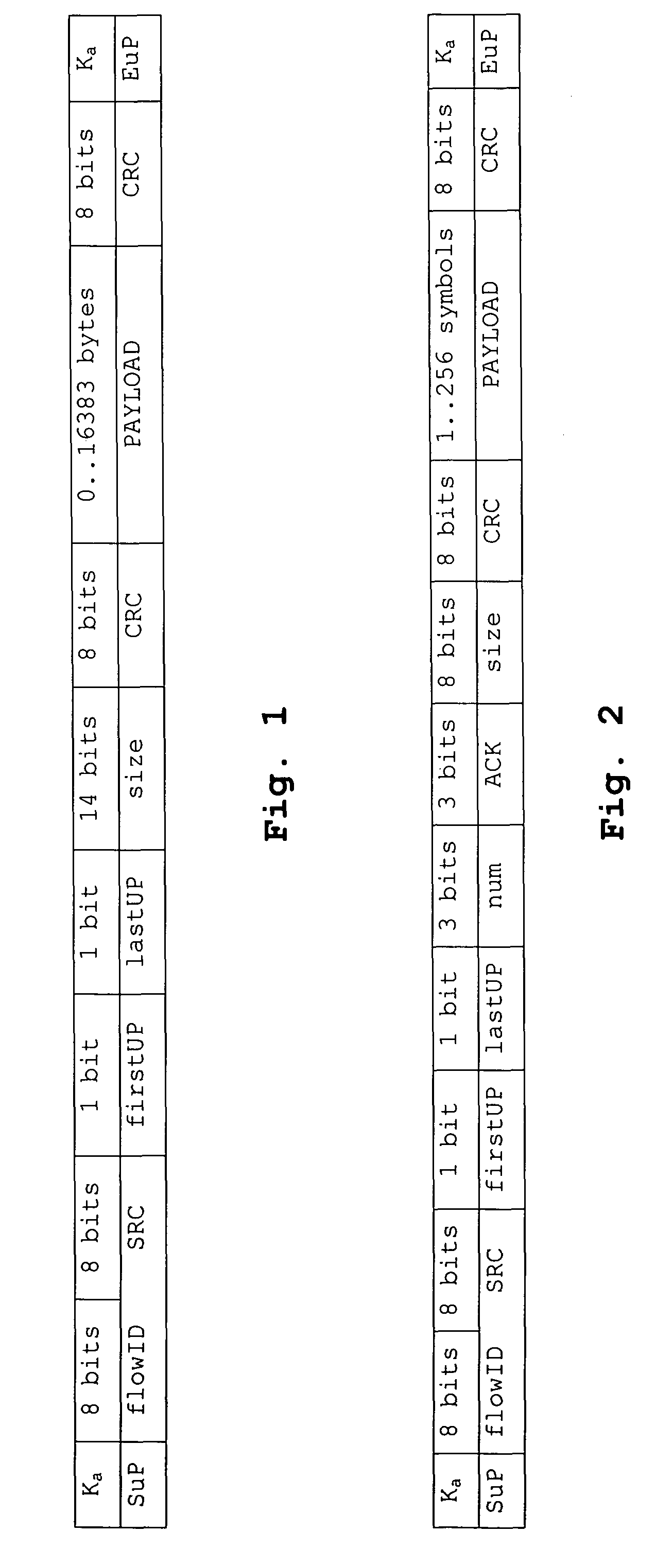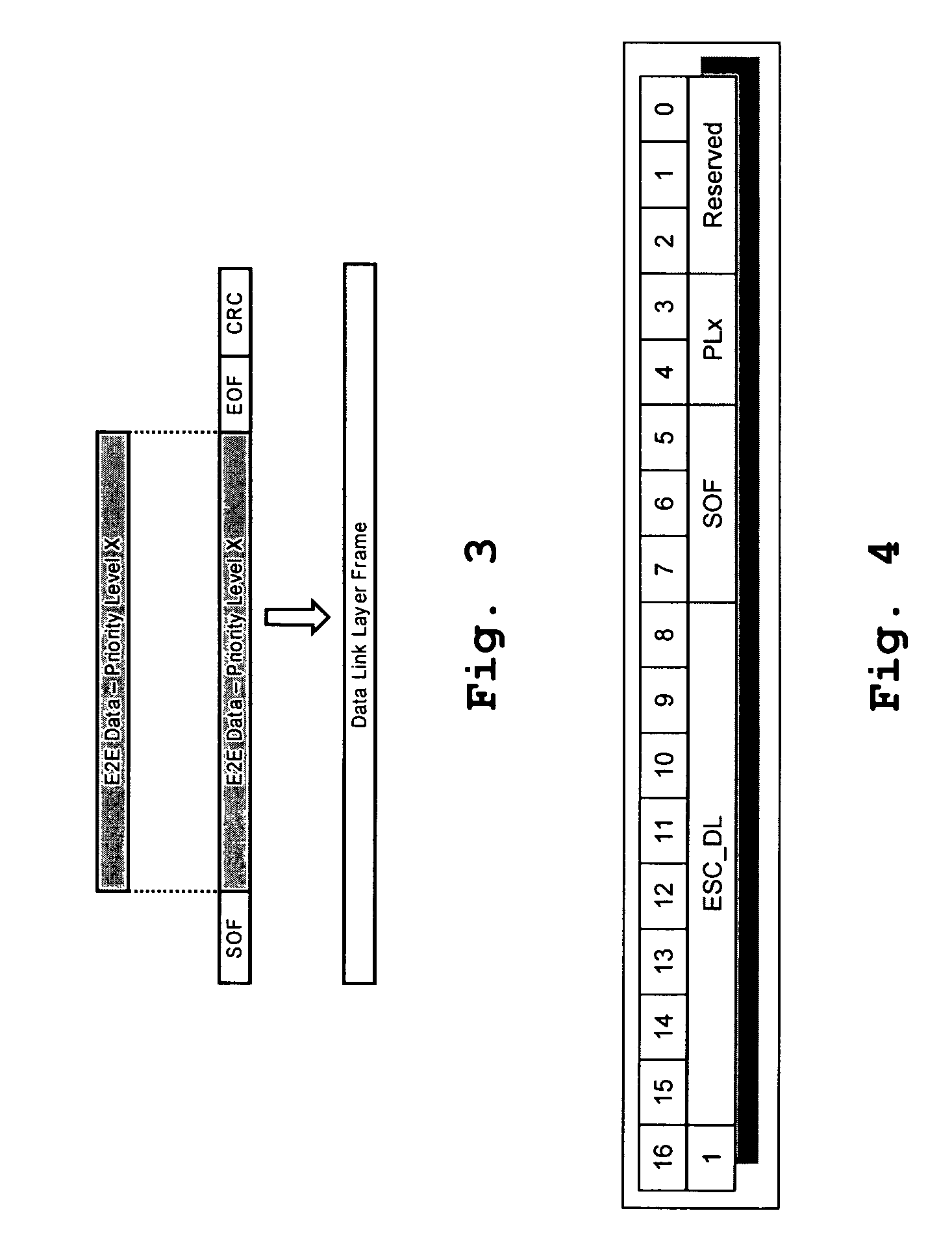Distributed (modular) internal architecture
a distributed, module technology, applied in the direction of program control, data switching networks, instruments, etc., can solve the problems of increasing increasing the robustness of the proposal, and not having an embedded security solution, so as to reduce the complexity of the datalink layer implementation and reduce the overhead of data
- Summary
- Abstract
- Description
- Claims
- Application Information
AI Technical Summary
Benefits of technology
Problems solved by technology
Method used
Image
Examples
Embodiment Construction
[0050]A preferred embodiment of the present invention is based on the idea to move the complexity implied by key encryption in nodes of the network where the cost impact will be minimal. Since the most expensive elements in a network are the switches or routers, the key encryption will be placed in them.
[0051]Of course, an endpoint may have also key encryption capabilities. This observation leads to the definition of two different classes of nodes: Trustable nodes and Untrustable nodes. Trustable nodes are composed of switches / routers and endpoints having key encryption capabilities. Untrustable nodes are composed of endpoints without or very limited key encryption capabilities.
[0052]Starting from a single trusted node, the trust is propagated in the network from trustable nodes to trustable nodes by a secured protocol for example based on key encryption. The exact details of the protocol used for such a purpose is irrelevant as long as the chosen protocol matches or exceeds the sec...
PUM
 Login to View More
Login to View More Abstract
Description
Claims
Application Information
 Login to View More
Login to View More - R&D
- Intellectual Property
- Life Sciences
- Materials
- Tech Scout
- Unparalleled Data Quality
- Higher Quality Content
- 60% Fewer Hallucinations
Browse by: Latest US Patents, China's latest patents, Technical Efficacy Thesaurus, Application Domain, Technology Topic, Popular Technical Reports.
© 2025 PatSnap. All rights reserved.Legal|Privacy policy|Modern Slavery Act Transparency Statement|Sitemap|About US| Contact US: help@patsnap.com



